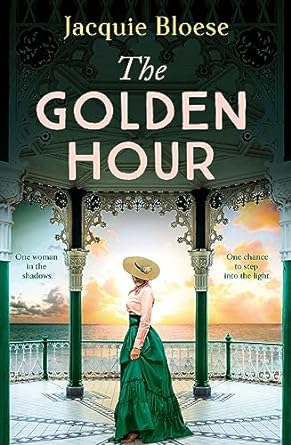Why a Booktrail?
1800s: At the golden hour, hidden truths and desires come to light . .

1800s: At the golden hour, hidden truths and desires come to light . .
In the genteel squares of late-Victorian Brighton, Ellen and Reynold Harper – twins, companions, colleagues – ply their trade as portrait photographers.
But at the golden hour, the models arrive to pose for the lucrative – and illicit – photographs that really keep the Harpers’ business afloat. This is the other, shadowy world of the city: a world of erotic tableaux, boundary-crossing music hall performers, and the sinister figure of the local gangster, the Croc.
When Ellen is drawn into the orbit of unhappy newly-wed Clementine, she finds herself torn between loyalty to her brother, her dangerous attraction to new model, Lily, and her burgeoning friendship with Clem. And as the two worlds of Brighton collide, the three women discover that there is only a knife edge between the promise of freedom, and the threat of ruin . . .
Brighton mini trail with the author!
Lewes Crescent
Known as “The Crescent”, this sweeping Regency terrace is home to unhappy newly-wed, New Yorker Clementine Williams, her older husband Herbert (when he’s not in London ‘on business’) and his ward Ottilie.
West Pier (now a much photographed ruin!)
“The band is mid-way through The Sailor’s Hornpipe when Ellen Harper first sees the girl.”
Sunday afternoon, a brass band, tuppence for entry at the kiosk. Lily, a laundry girl, eating a penny ice under the shelters, catches Ellen’s eye …
Empire Theatre, New Road, Brighton (now destroyed)
Much loved male impersonator Harriet (Harry) Smart performs at the Empire most nights, warming up the audience before the provocative tableaux vivants – or living statues – that appear at the end of each show. All attempts by the Brighton Vigilance Association to ban them have so far failed …
Albion Hill (high up, just past Grove Hill)
Home to Lily and her long-suffering siblings, her mother … and her brother-in-law, the lascivious Uncle Jack.
Palace Pier (Chain Pier)
Formerly known as the Chain Pier. Rusting and condemned in the late 1800s, then washed away in the storm of 1896.
Not all that glitters is gold – this is a novel about the flourishing trade of erotic photographs which occurred during the late 1800s and wartime. It’s both fascinating and very sad – when you learn about the women who took part and why. How an industry like this grew in the first place and why women ended up stuck inside is both compelling and utterly miserable. The author does a fantastic job of highlighting the strength of the women and their fight for justice which I found gave them a voice.
Novels like this are both fascinating and necessary. How else can we really find out about how women were treated and used. How they still are in many ways. What I particularly liked about the book was The National Vigilance Association who would scour pubs and theatres warning women away from this line of work. I cheered for them, and for the women.
A fascinating read!
Destination/Location: Brighton Author: Jacquie Bloese Departure: 1800s
Back to Results